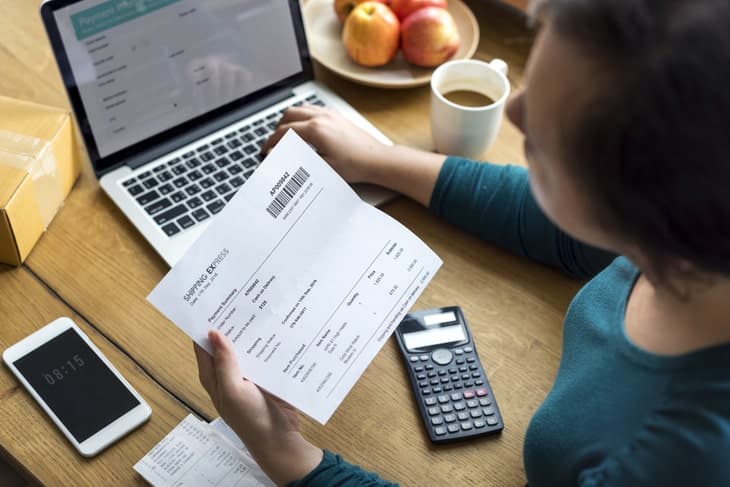Tracking a Bill of Lading (BOL) is like keeping an eye on a package while it’s on its way to you. Just like you can track your online orders to see when they’ll arrive, you can also track BOLs to know where your important goods are during their journey.
In 2023, thanks to technology, there are some great ways to do this efficiently.
Let’s explore the best methods for tracking BOLs, making sure your shipments reach their destination smoothly and on time.
What is a Bill of Lading?
A Bill of Lading (BOL) is like a receipt for shipping goods. It’s a document that shows what is being shipped, where it’s going, and who’s sending it. Think of it as a ticket for your stuff when it’s traveling on a ship, truck, or plane.
It helps track and prove that the goods were delivered to the right place. So, it’s important for businesses that need to send or receive things to keep things organized and make sure everything gets where it’s supposed to go.
Bill of Lading Example
Shipper: ABC Electronics
Consignee: XYZ Retail Store
Date: October 5, 2023
Description of Goods:
- 100 laptops
- 50 smartphones
- 200 tablet devices
Origin: Factory in City A
Destination: XYZ Retail Store in City B
Carrier: XYZ Shipping Company
Shipping Method: Ocean Freight
Tracking Number: 123456789
Special Instructions: Handle with care
In this example, the Bill of Lading is like a shipping receipt that shows what ABC Electronics is sending (laptops, smartphones, tablets), where it’s going (XYZ Retail Store in City B), and who will transport it (XYZ Shipping Company). It also includes important details like the date, shipping method, and any special instructions. This document helps track the shipment and ensures everything arrives at the retail store correctly.
Types of Bill of Lading
There are several types of Bill of Lading (BOL), each serving different purposes and requirements in the world of shipping and transportation. Here are some common types:
Straight Bill of Lading (Non-Negotiable BOL): This type is usually made out to a specific recipient and is not transferable to others. It’s often used when the goods have already been paid for or when there’s no need for intermediaries to buy or sell the goods during transit.
Order Bill of Lading (Negotiable BOL): This BOL is transferable, meaning it can be bought, sold, or used as a form of payment. It typically includes phrases like “to the order of [Name]” or “to bearer,” making it a negotiable instrument. It’s commonly used in international trade where ownership of the goods may change hands several times before reaching the final destination.
Clean Bill of Lading: This type is issued when the carrier acknowledges that the goods were received in good condition and without any damage. It’s often used when the cargo is in perfect condition.
Claused or Dirty Bill of Lading: When the goods received have some damage, discrepancies, or irregularities, a Claused or Dirty BOL is issued. It includes remarks or notations about the issues observed. It’s important for the recipient to note these discrepancies and possibly file a claim.
Ocean Bill of Lading: This BOL is specifically used for shipments transported by sea. It contains details about the cargo, the ship, the port of loading, and the port of discharge. It’s a crucial document in international shipping.
Inland Bill of Lading: Used for shipments that are transported within a single country, often by truck or train. It covers the land-based portion of the journey before goods are loaded onto a vessel.
Through Bill of Lading: When goods are transported across multiple modes of transportation (e.g., truck, train, and ship), a through BOL is used. It covers the entire journey from the origin to the final destination.
Airway Bill (AWB): Instead of a traditional BOL, airfreight uses an Airway Bill. It serves as a receipt for the goods and as a contract between the shipper and the air carrier. It’s essential for air cargo shipments.
Multimodal or Combined Bill of Lading: This type is used when goods are transported using multiple modes of transportation, such as a combination of truck, train, ship, and airplane.
These are some of the most common types of Bills of Lading, and the choice of BOL depends on the specific requirements of the shipment and the terms negotiated between the shipper and the carrier.
Best Ways to Track Bill of Lading
Tracking a Bill of Lading (BOL) is crucial for businesses and individuals to ensure the smooth and timely delivery of goods. In 2023, there are several efficient ways to track BOLs:
Online Tracking Portals: Many shipping companies and carriers provide online portals or websites where you can enter your BOL or tracking number to get real-time updates on your shipment’s status. Simply visit their website, enter the number, and you’ll see where your goods are in the shipping process.
Mobile Apps: Some shipping companies offer mobile apps that allow you to track your BOLs from your smartphone or tablet. Download the app, log in or enter your BOL details, and you’ll receive notifications and updates on the go.
Email Alerts: Subscribe to email notifications from the carrier or logistics company. They’ll send you regular updates on your shipment’s progress, including departure, arrival, and delivery notifications.
Third-Party Tracking Services: There are third-party websites and services that provide consolidated tracking for multiple carriers. You can enter your BOL or tracking number once, and they will provide you with updates from various carriers in one place.
Customer Service: If you prefer human interaction, you can contact the carrier’s customer service by phone or live chat. They can assist you in tracking your BOL and provide real-time information.
EDI (Electronic Data Interchange): For businesses with high shipping volumes, EDI systems can automate BOL tracking and provide seamless integration with your internal systems. This technology streamlines the tracking process.
GPS Tracking: Some advanced shipments, especially in the case of valuable or sensitive cargo, use GPS tracking devices. You can monitor the exact location of your goods in real-time through dedicated tracking platforms or apps.
Blockchain-Based Tracking: In some industries, blockchain technology is used to create secure and transparent records of shipments. It provides a tamper-proof history of the BOL and its journey.
Customized Software: Larger organizations often use customized supply chain management software that includes BOL tracking features. These systems can provide a comprehensive view of your entire supply chain.
Collaborative Platforms: Some platforms bring together shippers, carriers, and receivers to track and manage BOLs collaboratively, fostering communication and transparency throughout the shipping process.
Choose the tracking method that suits your needs and the complexity of your shipments. By staying informed about your Bill of Lading, you can better manage your logistics, plan for delivery, and respond quickly to any unexpected issues that may arise during transit.
Final Words
Tracking a Bill of Lading (BOL) is crucial for ensuring smooth and timely deliveries. In 2023, technology offers efficient tracking methods, from online portals to mobile apps and GPS tracking. Understanding BOL types is important, as it influences shipping processes. By utilizing these tracking options, individuals and businesses can enhance transparency and communication in the ever-evolving world of logistics.
FAQs
1. What is a Bill of Lading (BOL)?
A BOL is a document used in shipping to record the details of a shipment, such as what’s being shipped, where it’s going, and who’s sending it.
2. Why is tracking a Bill of Lading important?
Tracking a BOL ensures you can monitor the progress of your shipment, helping to ensure it reaches its destination on time and in good condition.
3. How can I track a Bill of Lading online?
You can track a BOL online by using the carrier’s tracking portal or website. Enter your BOL or tracking number to get real-time updates.
4. Are there mobile apps for tracking BOLs?
Yes, many shipping companies offer mobile apps that allow you to track BOLs on your smartphone or tablet.
5. Can I receive email alerts for BOL tracking updates?
Yes, you can subscribe to email notifications from the carrier or logistics company to receive regular updates on your shipment’s progress.
6. What is a “Clean” Bill of Lading?
A Clean BOL indicates that the goods were received by the carrier in good condition and without any damage or discrepancies.
7. What’s the difference between a “Straight” and an “Order” Bill of Lading?
A Straight BOL is non-negotiable and made out to a specific recipient. An Order BOL is negotiable and can be transferred or used as a form of payment.
8. How does GPS tracking work for BOLs?
GPS tracking involves attaching a tracking device to the shipment, allowing you to monitor its exact location in real-time through dedicated tracking platforms or apps.
9. What is a “Claused” or “Dirty” Bill of Lading?
A Claused BOL is issued when there are discrepancies, damage, or irregularities with the received goods. It includes remarks or notations about these issues.
10. Is blockchain technology used in BOL tracking?
In some industries, blockchain technology is employed to create secure and tamper-proof records of BOLs and their journey, enhancing transparency and security.



